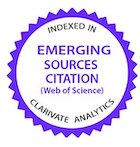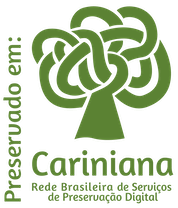Técnicas de enriquecimento ambiental para gambás-de-orelha-preta (Didelphis aurita Wied-Neuwied, 1826) em cativeiro
DOI:
https://doi.org/10.1590/1809-6891v24e-76165EResumo
O objetivo deste trabalho foi analisar os efeitos do enriquecimento ambiental alimentar no comportamento dos gambás-de-orelha-preta que se encontravam em cativeiro no Centro de Triagem de Animais Silvestres (CETAS), no município Serra, no estado do Espírito Santo (ES), de agosto a outubro de 2022. Dois modelos alimentares foram construídos para o estudo: os “Tubos Surpresa” e o “Quebra-Cabeça Alimentar”. Foram selecionados 24 gambás-de-orelha-preta, independente do sexo, juvenis, divididos em oito grupos, com três animais cada, sendo quatro grupos expostos a um modelo e quatro ao outro. Cada grupo foi submetido a duas condições: experimental, com a presença do modelo e controle, sem a presença do modelo. Cada condição durou 24 horas e ocorreram em dois dias consecutivos. Foram filmadas com câmera trap, resultando em 3233 vídeos, de 25 segundos cada. Para elaboração do etograma foram selecionados 24 vídeos de cada grupo, gravados entre as 18h00 e 19h30hs, período em que os animais se mostraram mais ativos. Os gambás interagiram com os dois modelos, acessando e comendo os alimentos escondidos, havendo preferência pela carne em comparação com a fruta. Não houve diferença significativa no comportamento dos gambás em relação aos modelos e observou-se que o comportamento agressivo diminuiu significativamente quando os modelos estavam presentes. Conclui-se que os modelos podem ser utilizados como enriquecimento ambiental para os gambás-de-orelha-preta, trazendo benefícios para a diminuição do comportamento agressivo.
Palavras-chave: Didelphis aurita; cativeiro; marsupial
Downloads
Referências
Gardner A. Mammals of South America, Volume 1: Marsupials, Xenarthrans, Shrews, and Bats. Chicago: University of Chicago Press; 2008. https://doi.org/10.7208/9780226282428
Perez Dictoro V. Que bicho é esse?. GUIA [Internet]. June, 14, 2021 [cited 2022 Dec 16];2(1):37-8. Available from: https://www.revistaguia.ufscar.br/index.php/guia/article/view/37
McManus JJ. Behavior of Captive Opossums, Didelphis marsupialis virginiana. American Midland Naturalist. 1970 Jul;84(1):144
Hunsaker II D, Shupe D. Behavior of New World Marsupials. In: Hunsaker II D, editor. The Biology of Marsupials. New York: Academic Press; 1977. p. 279–348.
Delciellos AC, Loretto D, Antunes VZ. Marsupiais na mata atlântica. Ciência Hoje. 2006 Jan;66–69.
Rossi RV, Bianconi GV, Pedro WA. Ordem Didelphimorphia. In: Reis NR, Peracchi AL, Pedro WA, Lima IP, editors. Mamíferos do Brasil. Londrina: UEL; 2006. p. 27–66.
Faria MB, Lanes RO, Bonvicino CR. Marsupiais do Brasil: guia de identificação com base em caracteres morfológicos externos e cranianos. São Caetano do Sul: Amélie Press; 2019.
Milli MS, Passamani M. Impacto da Rodovia Josil Espíndula Agostini (ES-259) sobre a mortalidade de animais silvestres (Vertebrata) por atropelamento. Nat Online [Internet]. 2006 [cited 2023 Apr 21];4:40–6.
Bueno PC. Sazonalidade de atropelamentos e os padrões de movimentos em mamíferos na BR-040 (Rio de Janeiro-Juiz de Fora). Revista brasileira de zoociências. 2010 Jan 1;12(3).
Costa LS. Levantamento de mamíferos silvestres de pequeno e médio porte atropelados na BR 101, entre os municípios de Joinville e Piçarras, Santa Catarina. Biosci J [Internet]. Aug, 30, 2011 [cited 2023 Apr 21];27(4):666–72. Available from: https://seer.ufu.br/index.php/biosciencejournal/article/view/7501.
Rangel CH, Neiva CHMB. Predação de vertebrados por cães Canis lupus F. Familiaris (Mammalia: Carnivora) no Jardim Botânico do Rio de Janeiro. Biodiversidade Brasileira - BioBrasil [Internet]. 2013 [cited 2022 Apr 27];(2):261–9. Available from: https://revistaeletronica.icmbio.gov.br/BioBR/article/view/345.
Broom DM. Welfare in relation to feelings, stress and health. Rev Electron Veterinária [Internet]. 2007 [cited 2023 Mar 17];8. Available from: https://www.researchgate.net/publication/26492349_Welfare_in_relation_to_feelings_stress_and_health.
Oliveira PKM, Carpi LC. Enriquecimento ambiental para ariranha (Pteronura brasiliensis) no zoológico de Brasília. Atas Saúde Ambient . 2016;4:30–46.
Foppa L, Caldara FR, Machado SP, Moura R, Santos RKS, Nääs IA, Garcia G. Enriquecimento ambiental e comportamento de suínos: revisão. Revista Brasileira de Engenharia de Biossistemas. 2014 Dec 9;8(1):1–7.
Dela Ricci G, Henrique Branco C, Teixeira Sousa R, Gonçalves Titto C. Efeito de diferentes técnicas de enriquecimento ambiental em cativeiro de onças suçuaranas (Puma concolor). Ciênc. anim. bras. [Internet]. July, 4, 2018 [cited 2023 Mar 02];19:1-10. Available from: https://revistas.ufg.br/vet/article/view/e-47693.
Pizzutto CS, Sgai MGFG, Guimarães MABV. O enriquecimento ambiental como ferramenta para melhorar a reprodução e o bem-estar de animais cativos. Revista Brasileira de Reprodução Animal. 2009;Vol. 33:p. 129-138.
Oliveira APG, Costa WM, Almeida RN de, Costa WM da, Dias NC da S, Vieira B de CR, et al. Uso de enriquecimentos ambientais como mitigadores de comportamentos anormais: uma revisão. Pubvet. 2014 Apr;8(7).
Maia APDA, Sarubbi J, Medeiros BBL, Moura DJD. Enriquecimento ambiental como medida para o bem-estar de suínos. Revista Eletrônica em Gestão, Educação e Tecnologia Ambiental. 2013 Sep 23;14(14).
McPhee EM, Carlstead K. The Importance of Maintaining natural Behaviors in Captive Mammals. In: Kleiman DG, Thompson KV, Baer CK, editores. Wild Mammals in Captivity - Principles and Techniques for Zoo Management [Internet]. Chicago: The University of Chicago Press; 2010. p. 303–13.
Ministério do Meio Ambiente (BR). Centros de Triagem de Animais Silvestres (Cetas) [Internet]. IBAMA; 2016 Nov 18 [cited 2022 Jul 27]. Available from: http://www.ibama.gov.br/fauna-silvestre/cetas/o-que-sao-os-cetas#:~:text=Contatos%20dos%20Cetas-,Sobre%20os%20Cetas,ou%20entrega%20volunt%C3%A1ria%20de%20particulares.
Projeto Marsupiais [Internet]. Últimos Refúgios. [cited 2022 Dec 04]. Available from: https://www.ultimosrefugios.org.br/projeto-marsupiais.
Coco A. Animal enrichment and how you avoid zoo animals to get bored [Internet]. Aisa Coco. 2018 [cited 2021 Aug 19]. Available from: https://www.aisacoco.com/animal-enrichment/.
Banton-Jones K. Block Puzzle Feeder [Internet]. Wild Enrichment. 2019 [cited 2023 Aug 19]. Available from: https://wildenrichment.com/small-mammals/block-puzzle-feeder/.
Hokoç JN, De Araújo Lima SM, Moraes AMM, Ahnelt P. A Visão em Marsupiais: Características e Evolução. In: Cáceres NC, editor. Os Marsupiais do Brasil: Biologia, Ecologia e Conservação. Campo Grande: Editora UFMS; 2012. p.159-171.
Murray AJ, Waran NK, Young RJ. Environmental Enrichment for Australian Mammals. Animal Welfare. 1998 Nov;7(4):415–25.
Hogan LA, Johnston SD, Lisle A, Horsup AB, Janssen T, Phillips CJC. Stereotypies and environmental enrichment in captive southern hairy-nosed wombats, Lasiorhinus latifrons. Applied Animal Behaviour Science. 2010 Aug;126(1-2):85–95.
Monticelli PF, Gasco A. Nesting behavior of Didelphis aurita: twenty days of continuous recording of a female in a coati nest. Biota Neotropica. 2018 Aug 2;18(3).
Baggio F. Cuidados com filhotes de Didelphis sp. (Gambás). Curitiba: Universidade Positivo; 2021 p. 1–41. Available from: https://repositorio.up.edu.br/jspui/bitstream/123456789/3361/1/FABIANA%20BAGGIO.pdf.
Kajin M, Cerqueira R, Vieira MV, Gentile R. Nine-year demography of the black-eared opossum Didelphis aurita (Didelphimorphia: Didelphidae) using life tables. Revista Brasileira de Zoologia. 2008 Jun;25(2):206–13.
Vieira EM, Camargo NF. Uso do Espaço Vertical por Marsupiais Brasileiros. In: Cáceres NC, editor. Os Marsupiais do Brasil: Biologia, Ecologia e Conservação. Campo Grande: Editora UFMS; 2012. p.347-364.
Tardieu L, Adogwa AO, Garcia GW. Didelphis species, neo-tropical animals with the potential for intensive production: Part 1 Review of taxonomy, natural history, general biology, animal behaviour, and nutrition. Tropical Agriculture (St Augistine). 2017; Vol. 94:p. 157-174.
Santori RT, Lessa LG, Astúa D. Alimentação, nutrição e adaptações alimentares de marsupiais brasileiros. In: Cáceres NC, editor. Os marsupiais do Brasil: biologia, ecologia e conservação. Campo Grande: Ed. UFMS; 2012. p. 385–406.
Carvalho FMV, Fernandez FAS, Nessimian JL. Food habits of sympatric opossums coexisting in small Atlantic Forest fragments in Brazil. Mammalian Biology. 2005 Nov;70(6):366–75.
Hsu M, Harder JD, Lustick SI. Seasonal energetics of opossums (Didelphis virginiana) in Ohio. Comparative Biochemistry and Physiology Part A: Physiology. 1988 Jan;90(3):441–3.
Hume ID. Nutrition of marsupials in captivity. International Zoo Yearbook. 2005 Jan;39(1):117–32.
Santori RT, Cerqueira, R, Kleske CC. Digestive anatomy and efficiency of Philander opossum and Didelphis aurita (Didelphimorphia, Didelphidae) in relation to the feeding habits. Revista Brasileira Biologia. 1995; 55:323-329.
Ceotto P, Finotti R, Santori R,Cerqueira R. Diet variation of the marsupials Didelphis aurita and Philander frenatus (Didelphimorphia, Didelphidae) in a rural area of Rio de Janeiro state, Brazil. Mastozoología Neotropical. 2009;16(1):49-58. Available from: https://www.redalyc.org/articulo.oa?id=45712055005.
Owen J. Feeding strategy. Chicago: University Of Chicago Press; 1982.
Downloads
Publicado
Como Citar
Edição
Seção
Licença
Copyright (c) 2023 Ciência Animal Brasileira / Brazilian Animal Science

Este trabalho está licenciado sob uma licença Creative Commons Attribution 4.0 International License.
Autores que publicam nesta revista concordam com os seguintes termos:
- Autores mantém os direitos autorais e concedem à revista o direito de primeira publicação, com o trabalho simultaneamente licenciado sob a Licença Creative Commons Attribution que permite o compartilhamento do trabalho com reconhecimento da autoria e publicação inicial nesta revista.
- Autores têm autorização para assumir contratos adicionais separadamente, para distribuição não-exclusiva da versão do trabalho publicada nesta revista (ex.: publicar em repositório institucional ou como capítulo de livro), com reconhecimento de autoria e publicação inicial nesta revista.
- Autores têm permissão e são estimulados a publicar e distribuir seu trabalho online (ex.: em repositórios institucionais ou na sua página pessoal) a qualquer ponto antes ou durante o processo editorial, já que isso pode gerar alterações produtivas, bem como aumentar o impacto e a citação do trabalho publicado (Veja O Efeito do Acesso Livre).






























